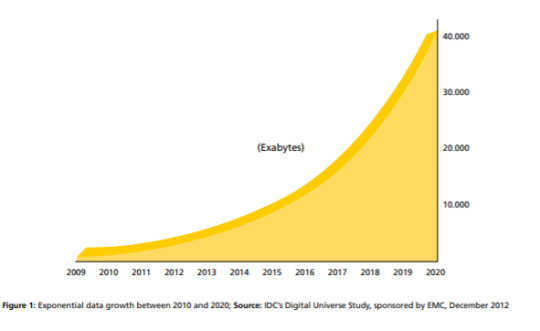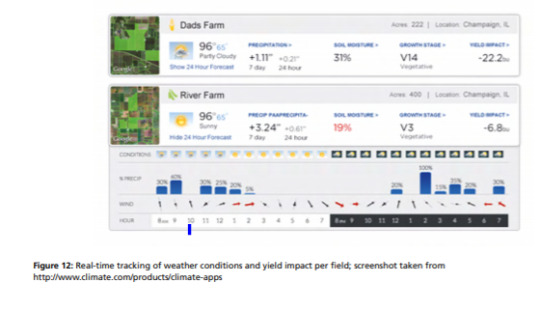Text
How getting an AMC increases the life of your warehouse
Why is maintenance proven to be a key factor in extending the life of a warehouse, reducing downtime, and lowering overall costs?
In a world where maintenance is considered underrated, a maintenance contract becomes essential for your warehouse to increase its life.
Good maintenance is necessary, that’s why annual maintenance contracts AMC’s are so popular and important. When you have AMC at your place, your maintenance need will be taken care of during the year ahead.
The machines used in warehouses are usually very expensive and often custom-made. If a single piece of equipment fails it leads to significant loss of the entire warehouse. This makes AMC highly necessary and worthwhile for your warehouse. The benefits of AMC are always worth the cost.
Read More: Visit
0 notes
Text
How Flexible warehousing is changing the supply chain industry
Businesses are always on the lookout for quick and agile ways to meet their retail demands. As a result, many businesses are turning to flexible warehouse solutions such as temporary space rents and a choice of inventory storage alternatives. Using the storage facilities of a 3PL (Third Party Logistics) provider on a flexible basis for all distribution logistics activities is referred to as flexible warehousing. Flexible warehousing can help uncover new business possibilities and enhance growth and profitability by optimizing supply chain and distribution logistics, whether a multi-national, mid-sized, or startup company. Flexible manufacturing provides a physical warehouse in the cloud for everybody in the current era, especially as the globe grapples with the disruptions created by the COVID-19 epidemic throughout all sectors, including logistics.
Read More: Visit
0 notes
Text
Impact of COVID-19 on the Cold Chain Industry in India
The COVID-19 epidemic that has swept the globe this year has wreaked havoc on people's health and the global economy. Several countries have implemented and continue to implement massive lockdowns in order to slow the spread of the virus through their people. This has generated huge demand and supply disruptions all around the world. Naturally, firms that provide 'vital' products and services faced significant hurdles as a result of the lockdowns. Internal teams, industry groups, and governments responded quickly, allowing these industries to minimize damage.
The terminology "cold chain" refers to food handling and distribution in which the product is kept at a safe temperature throughout the process of harvesting, chilling, or freezing, and finally to the point of sale. This necessitates transportation, storage, and exposure. The nature of the cold chain differs depending on the product.
Read More: Visit
0 notes
Text
Commercial Building Construction - in the Warehousing Industry
Construction can take many forms, but what exactly is commercial construction? Building projects that can be rented or sold in the private sector are referred to as commercial construction. Offices and manufacturing facilities, as well as medical centres and retail shopping malls, are examples of these spaces. Each commercial construction project is different in terms of scale and effort, and each one is distinct in its own way. The client is solely responsible for the structure's designs and layouts. Since each customer is different, each project will be different. A project can be classified into three sizes of commercial construction: small-scale, medium-scale, and large-scale.
Read More: Visit
0 notes
Text
Thriving in the new normal with Data Centre Infrastructure Solutions
Data has become the lifeblood of today's global digital economy, powering everything from retail and manufacturing to infrastructure and transportation, and the data centre is the core of this influx. By 2025, it is expected that over 175 zettabytes of data will be produced annually, thanks to the rapid proliferation of data across our digital world.
The data centre, as an ever-increasing part of modern business, has an impact on many areas of the enterprise, including data backup and recovery, networking, website hosting, email management and security, as well as providing support for cloud storage applications and e-commerce transactions.
The world has changed dramatically, and the way we do business is changing as well. This transformation will begin to speed up. Data centres are required to operate the operations of industrial organisations in all sectors that produce and use large quantities of data. In the face of the Coronavirus pandemic, increased remote working and virtual collaboration have ensured that demand for data centres remains high.
Read More: Visit
0 notes
Text
How is data analytics changing logistics business

It is 2021, the world is talking about the importance and unlimited power accessed by tapping into the right data and data modelling methods. Any data driven decision making fuels revenues and provides a competitive edge to businesses. There has probably not been a single day in the current decade when an individual can not share any kind of personal data information anymore. Even B2B businesses thrive on data analytics.
So, what is business data analytics?
Essentially, data analytics involves the process of collecting data and comprehending various insights and inferences it may provide. Business data often involves client data and past performance data, employee data and other key datasets companies get hold of. The purpose of collecting such data is to get useful insights and information that will positively affect a business. The success of a majority of startups and other businesses in today's world is determined by how well they tap into data analytics that suit their respective businesses. The process is not easy and companies often hire a lot of data scientists, analysts and data engineers to help them with the same. Data analytics is actively used in all fields from sales & marketing to operations, supply chain logistics, human resources and finance & accounting.
According to reports, India’s logistics business is worth over 200 billion US dollars and the number is expected to grow at the rate of 10% annually. Any individual working in the logistics sector or department knows the hefty amount of challenges that they have to deal with. The logistics industry is however revolutionizing with the role of data analytics and AI taking over the field providing effective solutions for most problems.
How data analytics is used by the logistics industry?

Source: BIG DATA IN LOGISTICS A DHL perspective on how to move beyond the hype December 2013
With the help of the right data, the right statistical methods and techniques; any business can flourish in such difficult and unpredictable business weather.
Take the case of 2020, when the COVID-19 pandemic disrupted supply chains, how were some companies able to pivot so fast and quickly get back on track while others didn't? The purchasing power was one factor, however, the biggest reason was decision making. The untold secret of such businesses is the data-driven factor which has helped with the early stage predictions and reduced supply chain risks. Data analytics brings with it, enhanced supply chain visibility and helps measure supply chain vulnerabilities. Wonder how that is possible? With the help of algorithms, the supply chain drivers can be analysed at multiple dimensions, including the supply side, demand side and the supply chain infrastructure for possible disruptions. Businesses that have taken note of such issues have streamlined their supply chains to reduce risks of disruptions due to man-made and natural disasters. By far, the automotive sector has the most complicated and disruptive supply chain and employing data analytics in their logistics has been their biggest boon.

Source: BIG DATA IN LOGISTICS A DHL perspective on how to move beyond the hype December 2013
That was one case of how data analytics had made supply chain and logistics more resilient. There are so many different ways an organization can improve the logistics business based on business analytics, all it requires is asking the right questions. As data analytics is frequently used from manufacturing to warehousing, to transportation and end-mile deliveries, asking what can be improved, where to cut costs without affecting the supply chain and what models to employ to come to a conclusion are a few questions asked.
Nowadays, many businesses have smart warehouses which collect data for analysis by using the right methods (Internet of Things (IoT) and Warehouse Management Systems (WMS) that take into account both, present and historical data and provide businesses with warehousing efficiency, increased speed, minimum risks, competitive advantage, and a long term revenue boost. This is how and why data analytics is changing the logistics business. A great example of how data analytics is Hitachi. When they implemented a data analytic approach that uses past work performance information to understand worksite improvements, environmental changes, and issue appropriate work instructions and then conducted a demo test which delivered an 8% work reduction without any additional costs.
In the future, it is predicted that more powerful technological methods will replace current methods and not adapting to the changing environments can negatively affect businesses. Hence, it is highly recommended to tap into the full potential of data analytics after proper and thorough research on what best suits your business and needs.
2 notes
·
View notes